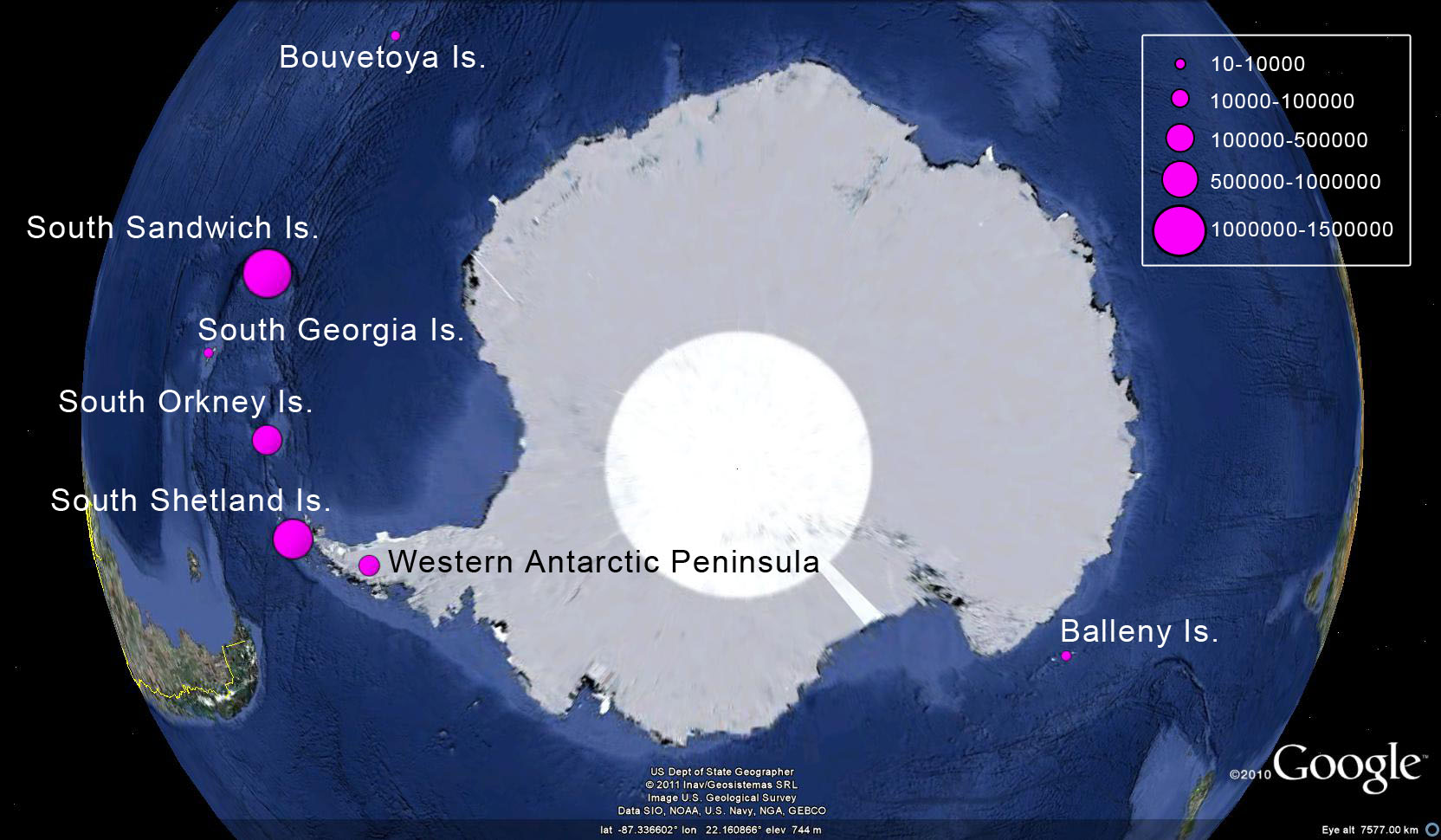-
DESCRIPTION
-
is the smallest of the Pygoscelis genus (3.5-5.5 Kg and 72 cm tall). Males are
larger than females. In the adult, crown, forehead and upper parts of the body
covered in blue-black feathers following molt, that brown over time from wear.
Black long tail. Conspicuous black strap under the chin from ear-to-ear. The
flippers are black above, white below, with a small black tip and thin black
leading edge. Black long bill. Pinkish to orange feet with black soles.
Reddish-brown iris, while congener’s eyes have dark irises. In the chick, silver
to light grey down at birth with a darker second gray down appearing at 2-3
weeks of age.
-
DISTRIBUTION
-
Circumpolar, primarily located on the Antarctic Peninsula, South Shetland, South
Orkney and South Sandwich Islands. Small breeding populations on South Georgia,
Bouvet, Heard and the Balleny Islands. Highly migratory in the non-breeding,
winter period (April – Sept) north of the seasonal pack ice.

-
HABITAT
-
Marine. They live on barren islands and large icebergs of the sub-Antarctic
Region and the Antarctic Peninsula, but they require ice-free ground to nest
on.
-
BREEDING BIOLOGY
-
Dense colonies predominantly on sloped habitat and often in association with
other Pygoscelid species. Breeders return to their colonies in early Oct – Nov,
and lay two eggs following 2 to 3 weeks of courtship. Both sexes incubate during
33-37 days. Chicks are guarded for approximately 4 weeks following hatching with
parents alternating periods at the nest with foraging trips to sea that average
12-24 hours each. The chicks are left alone in the colony and form crèches
following this guard phase; while both parents forage simultaneously, returning
to the nest to feed the chicks daily. Chicks fledge at 7-8 weeks of age after
reaching 85% of adult weight. Following fledging in late February, adult
penguins return to the sea to fatten up for the 3 week fast that accompanies
their annual catastrophic molt.
Photos by: J. Deely, C. Sutter and P. Angiel





